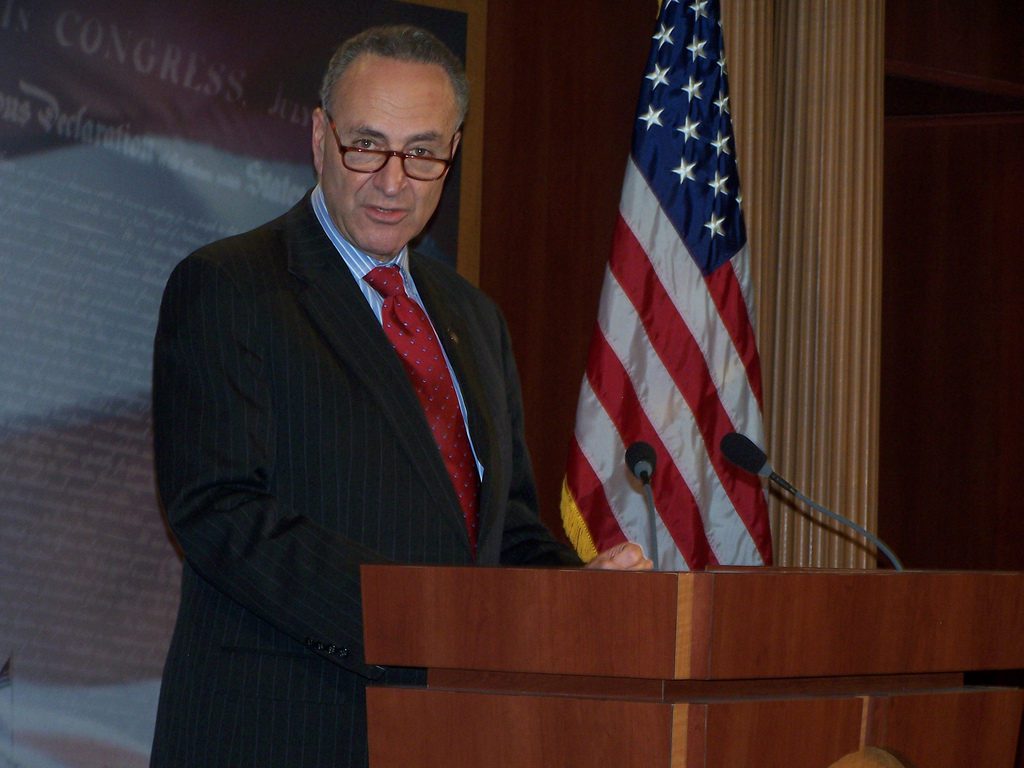Negotiations on DREAMers Begin
By • October 10, 2017 0 470

On Sunday, Oct. 8, the White House laid out 70 negotiable points it wants Congress to address in order to legalize some 700,000 DACA DREAMers. As defined in presidential orders and congressional proposals, DACA DREAMers are millennials (usually between the ages of 18 and 31) “who entered the country before the age of 16,” had been in the country illegally at least since June 15, 2012, and were given temporary waivers from deportation and work permits under President Barack Obama’s 2012 executive order known as DACA (Deferred Action for Childhood Arrivals).
On the whole, these DREAMers are a very sympathetic group of unauthorized immigrants. Most work and attend college. Many have U.S.-born children. Most Americans “don’t want to see them all kicked out of the country,” as President Trump put it. They touch Americans’ compassion, especially when characterized as “children who were brought into the country as infants by their parents” — even though those words do not appear in any official documents.
For more than a decade, they have been used (a) by Democrats as a legislative bait-and-switch bargaining chip to drive comprehensive immigration reform and (b) by Republicans as a reason to enhance border security.
Now, Democratic leaders Sen. Chuck Schumer of New York and Rep. Nancy Pelosi of California say they are “open to adding reasonable border security measures” to a new DREAMer legalization bill. They expect it to be simple and narrow: legalize all DACA recipients and give them a pathway to citizenship (a green card, that is, a permanent legal residency permit, the only one from which immigrants can apply for citizenship after five years if they choose to do so). In exchange, Democrats will approve a few more border guards and some increased border technology. “Reasonable,” they say, means no funds for building an expanded border wall.
But the term “reasonable” is relative.
President Trump made building a wall (and having Mexico pay for it) a signature campaign theme. But many of his supporters do not take that literally. For many, building the wall and increasing border security means enforcing U.S. immigration laws more vigorously, not only along U.S. borders, but also inside the country. It means more interior enforcement directed at immigrants here illegally and at those with temporary, time-limited visas.
Throughout our history, enforcement of immigration laws inside the country hasn’t been a priority. Time-limited temporary visas did not exist before the 1965 Immigration and Naturalization Act. But when that law prioritized granting green cards to extended family members of naturalized citizens over immigrants with work skills, the number of temporary work visas began to grow.
Today, the U.S. gives out more than 2 million temporary, non-immigration visas a year. There is a virtual alphabet soup for specialized workers, from low- to high-skilled (H1As and H1Bs), for students and scholars (Fs and Js), for investors, business people, performers, even geniuses. Most are not only time-limited but work-limited.
But there was little to no enforcement of these temporary visas for decades. In fact, there was no agency clearly responsible for enforcing immigration laws inside the country and almost no political will to go after those who overstayed their visas.
Until 9/11 happened.
In 2005, President George W. Bush created the Department of Homeland Security. DHS consolidated all border-enforcement agencies, including the Coast Guard and an electronic foreign-student tracking service (at least for as long as students were registered in school). The Immigration and Naturalization Service was eliminated and two bureaus were created in its stead: Citizenship and Immigration Services, which administers the naturalization process and to whom President Obama gave the management of the DACA program (expecting perhaps that DACA would soon become a permanent immigration law); and Immigration and Customs Enforcement.
ICE is the first agency in our history charged with interior enforcement of immigration laws. Today almost half of illegal immigrants overstay their legal but temporary visas. ICE has the jurisdiction to enforce legal temporary visas as well as to deport illegal immigrants and convicted felons with deportation orders.
Among President Trump’s negotiable DACA legalization talking points are several interior enforcement measures. One is to make the current volunteer national e-verify system — which electronically checks every new employee’s work-permit status — a nationwide requirement. Another would limit the ability of naturalized citizens to bring in extended family members — so-called “chain migration.” (Note: The emphasis on “family unification” originated in the days when immigrants rarely saw their extended family members again; today, in the age of Skype, such a priority is considered by some to be obsolete.)
Another would legislate that federal funds be withheld from so-called sanctuary cities that refuse to allow ICE to deport convicted and detained criminal aliens. Another would be to return “unaccompanied” teenagers from Central America who came in to join relatives who themselves are living in the U.S. illegally.
By definition, negotiations start with negotiable items. It is common for both sides to start with extreme positions and negotiate down. Serious negotiators never expect all or even half of the things they demand to be accepted. Sen. Schumer and President Trump are both known as tough, New York City dealers. Both say they want to legalize DREAMers who have been successful members of the American society.
That sounds like the foundation of a possible deal.

